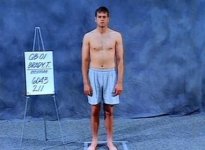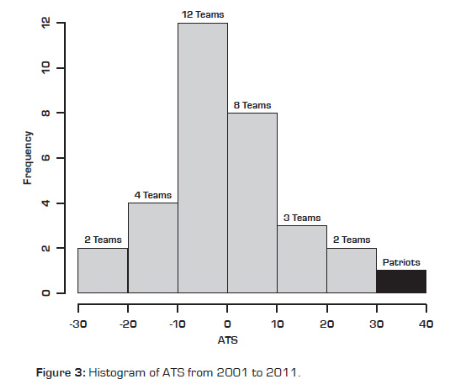Anyone who has ever been to Las Vegas knows that games of chance are devised so that the house wins more than it loses. After all, Las Vegas was not built by fools. The big casinos spend millions of dollars watching for players who are winning in ways that should be impossible. If a player rolls craps for two hours without losing, the house does not hand the player a trophy, they show the player to a private room with very large men waiting. Those men will give the player a heart to heart discussion on the laws of probability and chance. They may even work in a few lessons on the laws of gravity. In short, the house identifies a cheater by those who are winning too often.
National Football League wagering in the USA is a gigantic business. On football games, over $7 billion is wagered each week, and nearly $9 billion is wagered on the Super Bowl game each year. To bet on a football game, you can simply choose the team you think will win, and then get paid if you are right. A bet of that nature is called the “money line” bet.
But that is not the way most gamblers bet on football games. The most common way to bet on football uses what is called the spread or line. A line will be expressed like this:
DALLAS -3 Arizona
Dallas is favored in this game. The capital letters means Dallas is playing at home. If you want to bet on Dallas you have to “give up” three points to the house. This means Dallas must win by more than three points for you to win your bet. To be declared the winner and collect your money, Dallas must “cover” the three points you gave the house when placing the bet. Any close game (under 3 points) or an outright win by the underdog Arizona Cardinals results in you losing the bet. If Dallas were to win by exactly 3, the bet is a tie and your bet is returned.
The professionals setting the lines in Vegas use part science, part art. They start with known variables like defensive and offensive strength versus opponents, recent performance, injuries, a team’s record on grass verses artificial turf, etc. Then the major sports books post the lines to fine-tune their collective intelligence, essentially comparing notes. Their aim is to predict the score of each matchup as accurately as possible.
However, the ultimate goal of the house is to get approximately the same amount of money wagered on each team in every game. This is the goal, because the sports books charge a 10% “vigorish” on losing bets, while winning bets are paid off with even money. If you want to bet $100 on a game, you either win $100 or lose $110. If half of the bets are placed on the favorite, and half are placed on the underdog, the house “makes money every game. The winners are paid by the losers’ wagers and the house nets the 10% vig at zero risk.
What this means to the bettor is important; a line may start with a prediction of point differential, but it will move in order to entice bettors to place money on the underdog. The resulting line makes the favored team’s line even harder for that team to cover. The bookies are essentially bribing bettors to even out their wagering book. Good teams who cover the spread consistently are bad news for Las Vegas sports books because this is where all the public money is bet. Non-professional gamblers love favorites. If there is an imbalance of betting money, it is usually on the favorite side of each game.
A team using a cheating system would be winning in unpredictable ways that could not be accounted for by the professionals setting the Vegas lines. The core of a betting line is known variables, but what of unknown variables like the highly effective Spygate system? Even non-football variables like the altitude in Denver can be accounted for, if one can prove that advantage exists. However, if the secret “Spygate system was giving the Patriots an advantage and altering the score of the game, then the Patriots should have margins of victory that are beyond what was predicted. Said another way, the Patriots would have a very good record of winning games, Against The Spread (ATS).
It is one thing to beat the Arizona Cardinals on the field; it is quite another to beat the house in Las Vegas. It is important to note that a very good team can still have a weak record against the spread. A team could win most every game but not cover the spread very often. Good teams naturally face large point spreads.
[For this study we used team’s performance against the spread as reported by three sources: SportsRumble, BantheBook, and BetVegas websites. When all three did not agree, we used the numbers two sources agreed upon. The outcome of the study was not altered by the difference in these various sources.]
by Miao Zang PhD Statistical Science
Part III: Against The Spread Analysis (Regular Season Only)
Let us look at the histogram of team performance against the spread for eleven seasons from 2001 to 2011. The distributions of wins against the betting lines (covers) of all NFL teams are in Figure 3.
The center is close to zero, indicating that most teams win and lose around 50/50 against the spread, and the distribution is also symmetric and bell shaped. This assures us that this analysis follows basic statistical rules of a population study. All numbers are expressed as net numbers (93 wins with 80 losses nets 13 winning bets).
The Patriots have won 105 games and lost 67 games (6 ties) against the spread for an amazing +38 net winning bets. By winning 38 net games, the Patriots are once again nearly three standard deviations away from the league average. After calculations, the average ATS of all NFL teams is 0.34 and the standard deviation of 13.18.
...to be continued...


